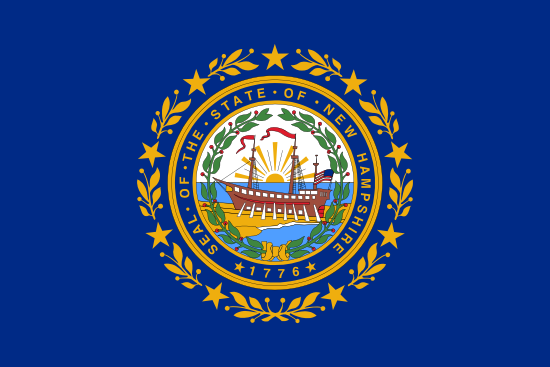
New Hampshire
- Statehood Year:
- 1788
- Capital:
- Concord
- Largest Cities:
- Manchester, Nashua, Concord
- Abbreviation:
- NH
New Hampshire is a state in the Northeast region of the United States, known for the White Mountains, lakes region, and colonial coast. It has a population of 1,415,860, making it the 41st most populated state in the country. The capital city is Concord. New Hampshire has a diverse economy with strong manufacturing and tourism.